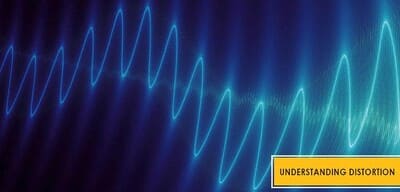Understanding Distortion
What is Harmonic Distortion?
Distortion is overloading any audio equipment to a point where the equipment because of overloading starts acting unnaturally, which results in adding harmonics. Depending on the equipment, it will start adding either even or odd harmonics or both. But this changes drastically when the context of the equipment changes. The way distortion happened accidentally was when someone tried to get the guitar amplifier louder than what it could play and hence overloading, somewhat “loudspeaker blowing,”, which was the way to go in the early 60s and 70s.


Then it became like a standard, especially for electric guitars and eventually in the bass, so on, and with other instruments wherever you can apply creatively. Distortion eventually became a most used and loved effect in all genres, with a stronghold on the distorted guitar sounds.
Distortion in the analog world is pleasant and is the kind of distortion we all are used to listening to. All the distortion plugins like guitar distortion plugins, after effects distortion plugins, or othersthat we come across in any DAW or digital domain are inspired by analog equipment. Now this distortion can happen at many stages and in different ways. Distortion can happen at a compressor, an EQ, or simply on a channel strip at input on the channel strip at the gain staging part, wherever there is an opportunity of overloading the equipment with the audio signal.
Overloading technically becomes impossible when you are in the digital domain. As in the digital domain, the audio signal is nothing but samples. When samples overload at any stage, the digital domain reacts the way analog equipment responds. Unlike the analog domain, the distortion effect in the digital domain is harsh and undesirable. We can say that distortion does not exist in the digital domain, and what exists in the digital domain is clipping, which is harsh and unpleasant.
So then, what are the distortion plugins we come across in the digital domain?
Many plugins offer distortion in any DAW, but they do not work like how the analog equipment works. All the distortion plugins replicate the frequency changes or the analog equipment’s waveform changes in the digital domain. In short, they are nothing but simulations of the working of the equipment from the analog world.
So what makes harmonic distortion unique or desirable is the analog circuitry and nothing else, which allows us to apply the approach to every piece of equipment possible. Digital gives rise to several plugins such as EQs, compressors, and time-based effects such as reverbs, delays, and echoes.
The warmth and brightness that we notice while using analog simulations are nothing but the circuitry that we like and the way audio changes when it passes from the circuit. Though we can simulate it, there is no guarantee that it will match the analog gear. Now, this is the case for every simulation.
Technically speaking, we should not be using a compressor with tonal shaping, as a compressor will only work with the audio dynamics and not the totality of any audio. But this statement becomes void when it comes to analog simulations, as what they are being used for is the tonality of the circuitry. For example, we have the 1176 compressor, an extreme setting that distorts and starts adding harmonics to the audio.


CATEGORIES
Are you aspiring to become a proficient Sound Engineering professional?
Look no further; we are committed to nurturing the potential of young minds. Are you ready to enhance your skills?


